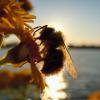Oregon Envirothon 2023 held fully in-person; Logos Public Charter School wins
PORTLAND, Ore. – The 2023 Oregon Envirothon returned to a fully in-person event on May 5 at The Oregon Garden in Silverton, following two years of virtual competitions and a hybrid approach last year. More than 90 high school students, representing a dozen schools from across the state, participated in the annual environmental sciences competition, which is hosted each year by the Oregon Forest Resources Institute (OFRI).















